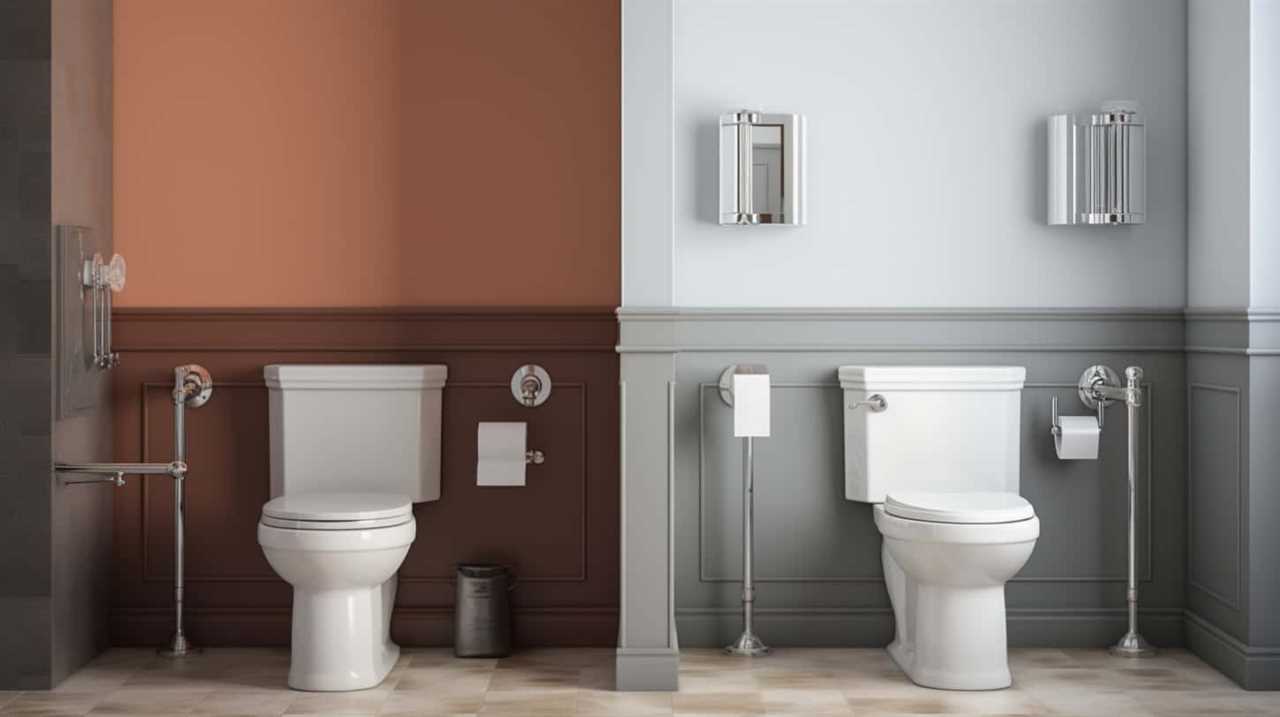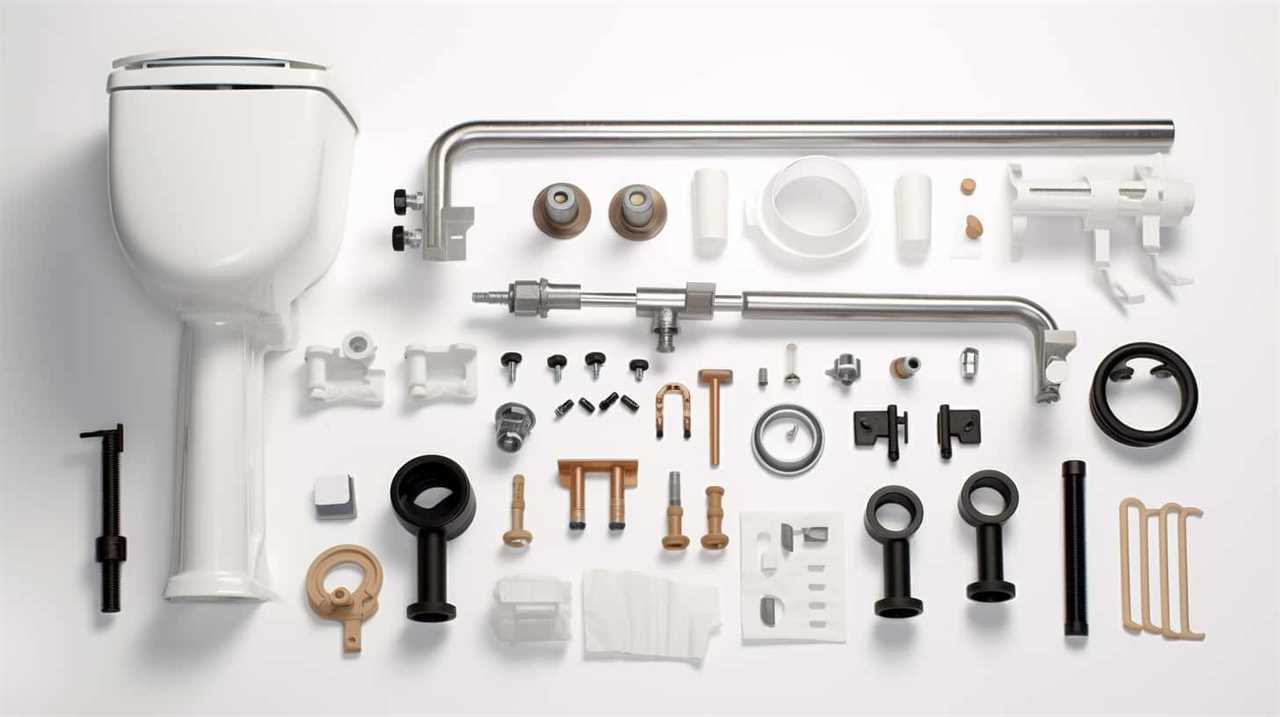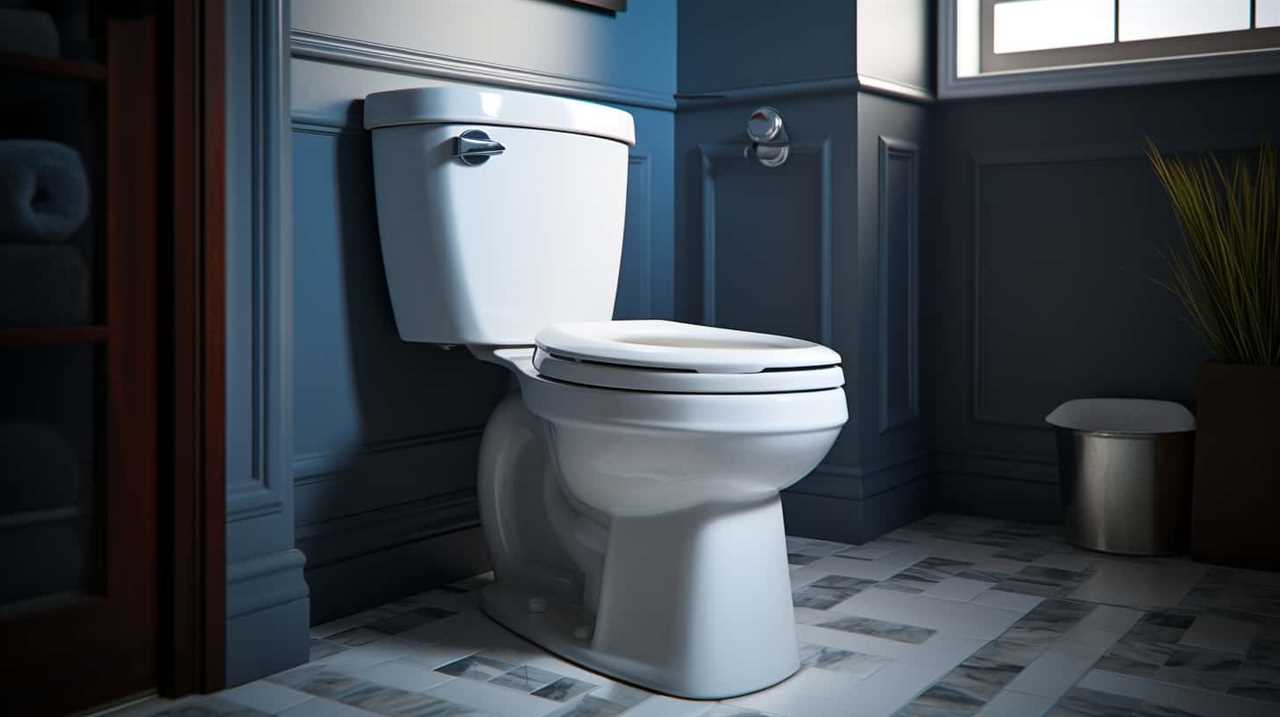Ever wondered why our toilet flush keeps running? It’s like a leaky faucet that never stops. Well, fear not! We’re here to shed some light on the common causes behind this pesky problem.
From the flapper and chain to the fill valve and float, we’ll guide you through the ins and outs of your toilet’s inner workings.
By the end, you’ll be armed with the knowledge to fix or replace faulty components and restore peace to your bathroom kingdom.
Key Takeaways
- A worn-out or damaged flapper valve can cause a constantly running toilet by failing to create a proper seal and allowing water to continuously leak into the bowl.
- Issues with the flapper or chain, such as damage or misalignment, can also result in a constantly running toilet.
- A faulty fill valve or float can cause continuous water flow into the tank after each flush, leading to a constantly running toilet.
- Adjusting the water level in the tank may help resolve a constantly running toilet, as low water level can be caused by a malfunctioning fill valve and high water level can be caused by a faulty float.
Common Causes of Constantly Running Toilets
One common cause of constantly running toilets is a faulty flapper valve. The flapper valve is responsible for controlling the flow of water from the tank to the bowl during a flush. When the flapper valve is worn out or damaged, it fails to create a proper seal, causing water to continuously leak into the bowl. This can result in a constantly running toilet and wasted water.

Troubleshooting toilet flush issues involves checking the flapper valve for any signs of wear or damage. If necessary, it should be replaced with a new one to restore proper functionality.
Additionally, considering water saving alternatives for toilets, such as dual flush or low-flow toilets, can help reduce water consumption and prevent issues with constantly running toilets in the future.
Understanding the Flapper and Chain
To continue our discussion on the common causes of constantly running toilets, let’s delve into understanding the flapper and chain.
The flapper is a rubber valve that’s responsible for controlling the flow of water from the tank to the bowl during a flush. It’s attached to the flush valve by a chain. When you press the flush handle, the chain lifts the flapper, allowing water to flow into the bowl.

After the flush, the flapper should close tightly to prevent any water from leaking into the bowl. However, if the flapper isn’t properly maintained or if there’s an issue with the chain, it can result in a constant running toilet.
Troubleshooting leaks in the flapper and chain involves checking for any misalignments, replacing worn-out parts, and ensuring that the chain has the right amount of slack. Regular flapper maintenance can help prevent leaks and keep your toilet functioning properly.
Checking the Fill Valve and Float
To check the fill valve and float, we need to understand their role in the functioning of a toilet. The fill valve is responsible for controlling the water flow into the tank after each flush, while the float ensures that the tank fills to the appropriate level.
If your toilet is constantly running, it could be due to a faulty fill valve or float. Start by inspecting the fill valve for any signs of damage or debris. If necessary, replace the fill valve to fix the issue.

Next, check the float for any leaks or damage that may be causing it to malfunction. Troubleshooting leaks and replacing the flapper can also help resolve the problem.
By addressing these potential issues, you can effectively stop your toilet from running continuously.
Now, let’s move on to adjusting the water level in the tank.
Adjusting the Water Level in the Tank
To address the issue of a constantly running toilet, we can now focus on adjusting the water level in the tank. Troubleshooting water supply issues and understanding the importance of regular toilet maintenance are key in resolving this problem. By adjusting the water level, we can ensure that the toilet functions efficiently and minimizes water wastage.

To help you understand this process better, let’s take a look at the following table:
| Potential Issue | Possible Cause | Solution |
|---|---|---|
| Low water level | Malfunctioning fill valve | Adjust the fill valve to increase water level |
| High water level | Faulty float | Adjust the float to lower water level |
| Inconsistent water level | Clogged supply line | Clear any blockage in the supply line |
| Fluctuating water level | Worn-out flapper valve | Replace the flapper valve |
Replacing or Repairing Faulty Toilet Components
We can replace or repair faulty toilet components to resolve the issue of a constantly running toilet.
When troubleshooting a toilet flush, it’s important to check for any toilet tank leaks, as they can contribute to the constant running.
One common culprit is a faulty flapper valve, which is responsible for sealing the tank and preventing water from continuously flowing into the bowl. If the flapper is worn or damaged, it may not create a tight seal, leading to water leakage.

Another potential problem is a malfunctioning fill valve, which controls the water supply to the tank. If the fill valve isn’t functioning properly, it can result in a continuous flow of water into the tank, causing it to constantly run.
Frequently Asked Questions
How Can I Prevent My Toilet From Constantly Running in the Future?
To prevent our toilet from constantly running in the future, we can implement preventive measures such as regularly checking for leaks, replacing faulty parts, and following troubleshooting tips to ensure proper functioning.
Are There Any Eco-Friendly Options for Fixing a Constantly Running Toilet?
There are eco-friendly solutions and water-saving alternatives available for fixing a constantly running toilet. We can explore different options that help conserve water and reduce environmental impact while effectively resolving the issue.
Can a Constantly Running Toilet Lead to Higher Water Bills?
Yes, a constantly running toilet can indeed lead to higher water bills. To save water and troubleshoot common toilet issues, we recommend implementing water-saving tips and promptly addressing any running toilet problems.

How Long Does It Typically Take to Fix a Constantly Running Toilet?
On average, it takes about 1-2 hours to fix a constantly running toilet. The most common causes are a faulty flapper or fill valve. Replacing these parts or adjusting the chain length usually solves the problem.
Are There Any Temporary Fixes for a Constantly Running Toilet Until It Can Be Repaired or Replaced?
Temporary solutions for a constantly running toilet can buy time until it’s fixed or replaced. Quick fixes like adjusting the float, replacing the flapper, or tightening connections may provide some relief.
Conclusion
In conclusion, a constantly running toilet can be a frustrating and wasteful problem to deal with.
It’s important to understand the common causes such as a faulty flapper or fill valve, and to check and adjust these components as needed.

One interesting statistic to note is that a running toilet can waste up to 200 gallons of water per day, highlighting the urgency of addressing this issue promptly to conserve water and save on utility bills.










